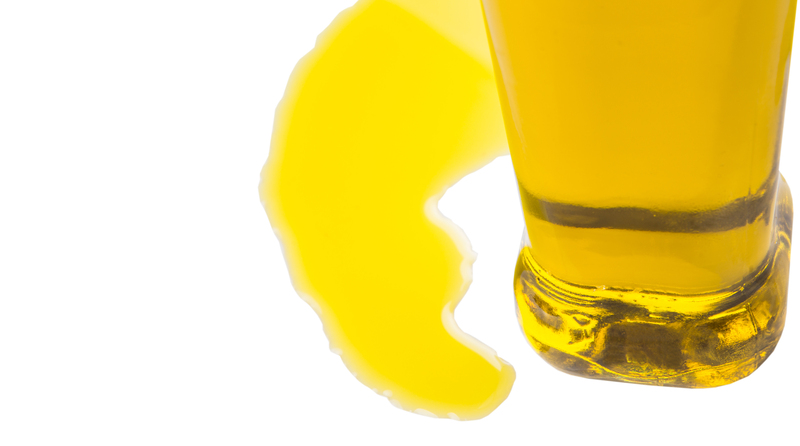How to Safely Remove Mould from Window Sills
Posted on 30/05/2025
How to Safely Remove Mould from Window Sills
Mould growth on window sills is a common household problem that not only affects the aesthetic appeal of your home but can also pose serious health risks. If you notice black or green spots appearing around your windows, it's essential to address the issue promptly and correctly. In this comprehensive guide, we'll explore various ways to remove mould from window sills safely, prevent its return, and create a healthier living environment.
Understanding Mould on Window Sills
Mould, or mildew, is a type of fungus that thrives in damp, humid environments. Window sills are particularly susceptible because condensation easily forms around panes, creating moist conditions that encourage mould spores to grow.
Common Causes of Mould Growth on Window Sills
- Poor ventilation: Lack of airflow increases moisture buildup.
- High humidity levels: Humid household air encourages condensation near windows.
- Leaky windows: Gaps and cracked seals can allow water to seep in.
- Poor insulation: Drafty windows cause temperature differences that lead to condensation.
Why Is Mould Dangerous?
Mould doesn't just cause unsightly stains and odours. It can also trigger allergic reactions, asthma attacks, and other respiratory problems, especially in children, elderly individuals, and those with weakened immune systems. Spending time in a space with mould can lead to symptoms such as:
- Coughing and sneezing
- Runny or congested nose
- Itchy eyes, skin, or throat
- Headaches or fatigue

What Supplies Do You Need to Clean Mould from Window Sills?
Before you begin removing mould from window sills, gather all the necessary cleaning supplies. Preparation is key for safe and efficient mould removal.
- Protective gear: Gloves, goggles, and a mask (preferably an N95 respirator) to avoid breathing in spores.
- Cleaning solution: Options include white vinegar, hydrogen peroxide, baking soda, or store-bought mould remover. (Do not mix cleaning agents.)
- Spray bottle: For even application of your mould remover.
- Scrubbing brush: Or an old toothbrush for smaller crevices.
- Non-abrasive sponge: For delicate surfaces.
- Microfiber cloths: For wiping and drying.
- Plastic sheet or newspaper: To protect floors and nearby surfaces.
- Large garbage bag: For disposing of contaminated materials.
How to Safely Remove Mould from Window Sills: Step-by-Step Guide
Step 1: Prepare the Area
- Open a window for ventilation. This helps disperse harmful spores during cleaning.
- Lay down newspapers or a plastic sheet under the affected area to catch debris or cleaning drips.
- Put on all protective equipment to safeguard your skin, eyes, and lungs.
Step 2: Remove Surface Mould
- Using a dry cloth or paper towel, gently wipe off any loose, dry mould. Dispose of these immediately.
- Do not use a vacuum, as it can spread spores through the air.
Step 3: Apply Mould Removal Solution
- Pour your chosen cleaning agent (such as white vinegar or hydrogen peroxide) into a spray bottle.
- Spray the entire affected area generously. Allow it to sit for 15-20 minutes. This ensures the solution penetrates the mould and kills the spores below the surface.
Step 4: Scrub the Area Safely
- Using your brush or sponge, scrub the window sill thoroughly. Pay special attention to crevices and joints where mould can hide.
- For tough stains, repeat the application and scrubbing process.
Step 5: Wipe and Dry
- Use a clean, damp microfiber cloth to wipe away any remaining residue.
- Follow up with a dry cloth to eliminate all moisture. Dryness is critical in preventing mould regrowth.
Step 6: Dispose and Clean Up
- Place all used wipes, paper towels, and gloves into a sealed garbage bag.
- Clean your tools and wash your hands thoroughly.
Safest Cleaning Solutions for Mould on Window Sills
There are multiple methods to safely remove mould from window sills. Each has its strengths, and some are more suitable for sensitive individuals or for certain window frame materials.
Natural Options
- White vinegar: The acidity of vinegar kills around 80% of mould species. Spray undiluted vinegar directly onto the mould, wait, then wipe clean.
- Baking soda: Mix one teaspoon of baking soda with two cups of water, spray, and scrub. It also acts as a deodorizer.
- Hydrogen peroxide (3%): Spray onto the window sill, let it sit, and then scrub. Effective and non-toxic, but test on hidden surfaces first.
- Tea tree oil: Mix one teaspoon of tea tree oil with one cup of water, spray, and leave it to dry. It's natural, but can be expensive.
Commercial Cleaners
Many mould removing products containing fungicides are available in hardware stores. Always follow the manufacturer's instructions, ensuring the product is safe for your window material (wood, uPVC, etc.) and well-ventilated areas.
Special Tips for Wooden vs. uPVC Window Sills
Wooden window sills can be more prone to mould due to their porous nature and the tendency to absorb moisture. Avoid saturating wood with liquid and dry thoroughly afterward. For uPVC window sills, most gentle cleaning products are safe; always spot-test if unsure.
What Not to Do When Cleaning Mould
- Don't use bleach on porous surfaces like wood; it won't penetrate and will only bleach the mould, not kill it.
- Avoid mixing cleaning agents, especially bleach and ammonia. This produces toxic fumes.
- Don't ignore hidden areas: Check behind window trims or joints for hidden mould.
- Never skip safety gear: Always protect your lungs, eyes, and hands.
Preventing Mould from Returning to Your Window Sills
The secret to keeping window sills free from mould lies in maintenance and moisture control. Here's how to reduce the risk:
- Ventilate regularly: Open windows or use an extractor fan to allow moisture to escape.
- Wipe down window sills daily: Remove condensation promptly, especially during cold weather.
- Use a dehumidifier: Especially in humid climates or poorly ventilated rooms.
- Insulate and repair windows: Seal gaps and cracks; consider double-glazing.
- Install trickle vents: These allow continuous airflow without opening the window.
- Monitor humidity: Keep indoor humidity below 60%, ideally between 30-50%.
When Should You Call a Professional?
While most small areas of mould can be handled using the above tips for removing mould from window sills, the following situations require professional expertise:
- The mould covers more than one square metre.
- Mould keeps returning despite your cleaning attempts.
- You have health concerns such as allergies, asthma, or a compromised immune system.
- Mould is growing inside the window frame or in cavity walls.
A certified mould remediation specialist can assess structural problems, ensure deep cleaning, and prevent recurrence.

Frequently Asked Questions About Mould on Window Sills
Can I remove mould from window sills myself?
Yes! Most cases of minor window sill mould are manageable with home remedies and proper precautions. Make sure to wear safety gear and follow the steps outlined above.
What is the best cleaner for window sill mould?
White vinegar and hydrogen peroxide are widely considered the best non-toxic cleaners for killing mould spores on window sills. Commercial mould removers can be effective but should be used as directed.
How can I get rid of the mould smell from window sills?
Wipe the area with vinegar or baking soda, air out the room, and use a dehumidifier. The odour will disappear with the mould.
Is mould on window sills dangerous?
If left untreated, mould can spread and cause health symptoms. Prompt cleaning and improved ventilation make your home safer and healthier.
Summary: Keeping Your Window Sills Mould-Free
Removing mould from window sills is crucial for both the appearance of your home and your family's health. By addressing the root cause--usually moisture and poor ventilation--you can prevent mould from making a comeback. Remember to act quickly at the first signs of mould, use safe, effective cleaning agents, and protect yourself during the process. With regular maintenance and the right knowledge, you can enjoy clean, healthy, and mould-free window sills all year round!
- Identify the source of moisture and fix leaks promptly
- Clean condensation daily, especially in winter
- Ventilate and dehumidify your home
- Stay vigilant--early intervention is key
Do you have tips for removing mould from window sills? Share your experiences and questions below!



